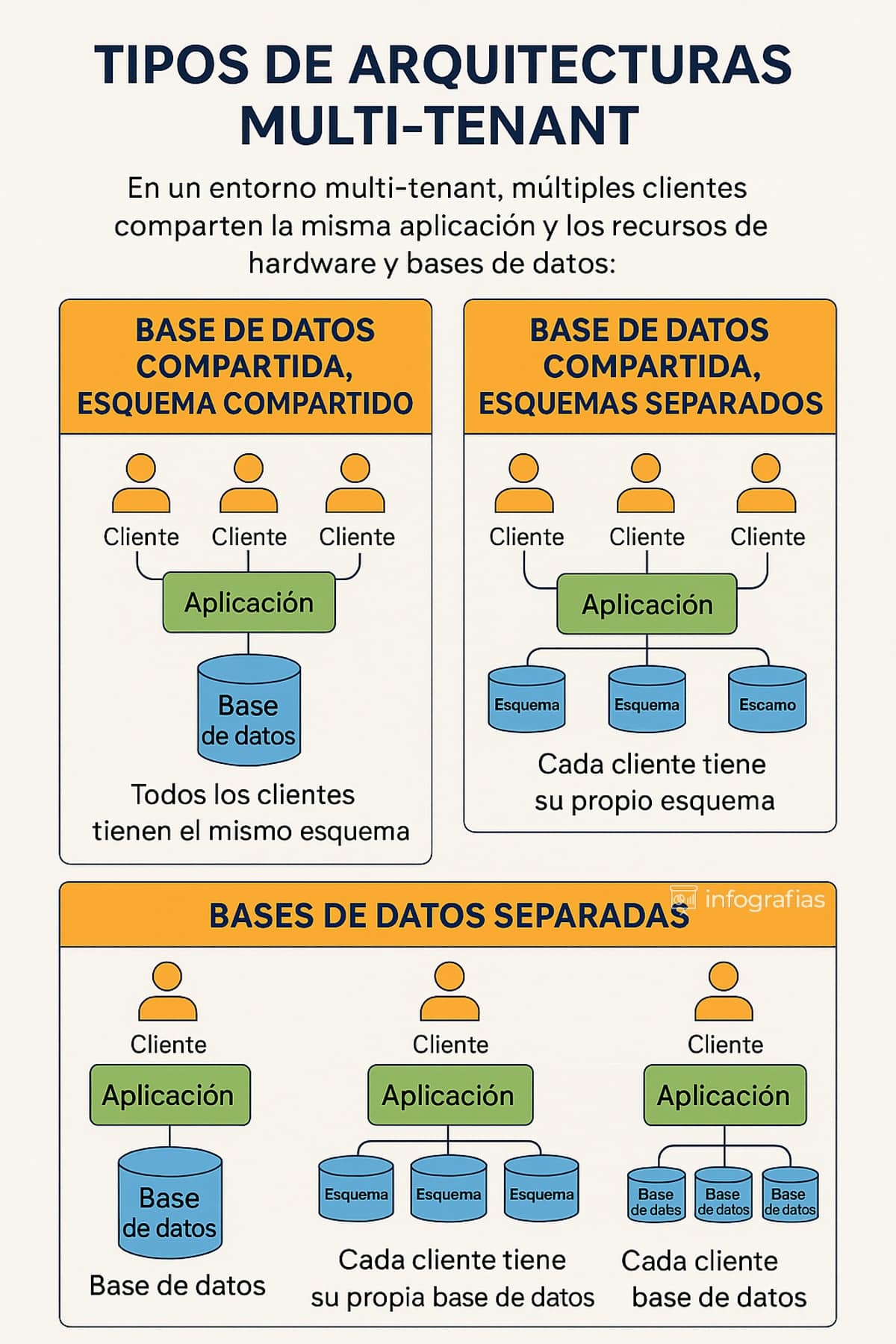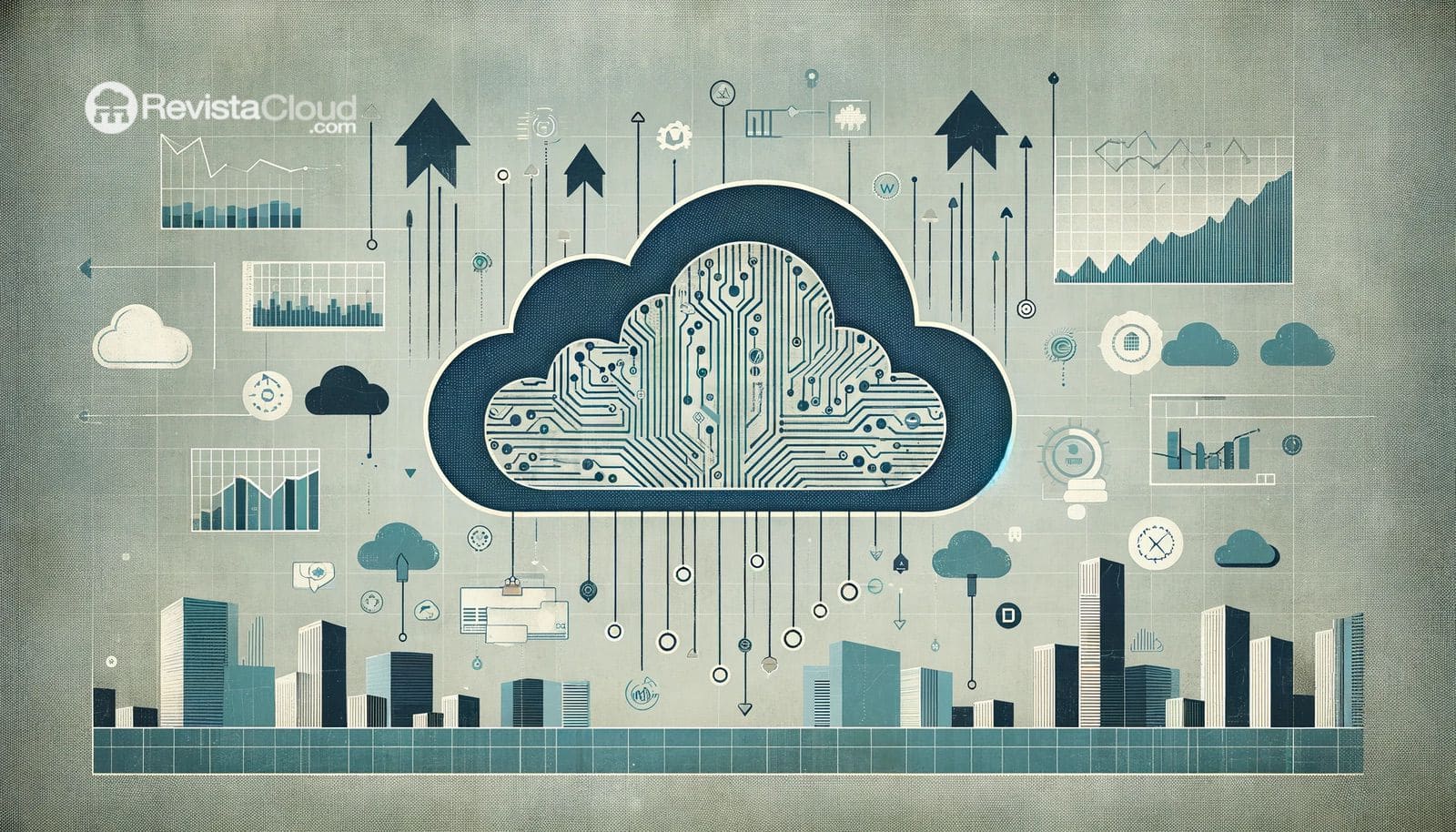In the era of Software as a Service (SaaS), multi-tenant architecture has established itself as one of the cornerstones of cloud computing. This technique allows multiple users — or “tenants” — to share the same instance of an application or infrastructure while maintaining the privacy and isolation of their data. Its ability to scale, reduce costs, and simplify management has made it the preferred option for many tech companies.
What is Multi-Tenant Architecture?
Multi-tenant architecture involves running a single instance of an application that serves multiple clients. Each of these clients — referred to as “tenants” — has access to their own data and configurations within a shared environment. The classic metaphor is that of an apartment building: each tenant has their own private space, but they share the physical structure of the building.
This approach significantly reduces operational costs, improves resource efficiency, and enables service providers to easily manage updates, maintenance, and support.
How Does It Work?
In a typical multi-tenant environment, the application and the underlying infrastructure (servers, storage, network) are shared among all users. However, each client’s data and configurations are isolated using techniques such as logical partitioning, separate schemas in databases, or even virtualized containers.
The result is a highly resource-efficient solution, though it presents specific challenges in terms of security, customization, and performance.
Multi-Tenant vs. Single-Tenant
Unlike single-tenant architecture, where each client has a dedicated instance of the application and its associated infrastructure, the multi-tenant model distributes resources among several users.
| Feature | Multi-Tenant | Single-Tenant |
|---|---|---|
| Cost | Lower | Higher |
| Maintenance | Provider’s responsibility | Client’s responsibility |
| Scalability | High | Limited |
| Customization | Limited | High |
| Security | Logical isolation | Physical and logical isolation |
| Availability | May be affected by other tenants | Exclusive for the client |
Types of Multi-Tenant Architectures in Databases
- Shared Database, Shared Schema
All tenants share the same database and schema. It is the most efficient model but the least flexible. - Shared Database, Separate Schemas
An intermediate step: a single database with multiple schemas, one for each client. It improves isolation, although with increased complexity. - Separate Databases
Each client has their own database. This provides greater isolation and flexibility but also comes with higher costs and maintenance complexity.
Notable Multi-Tenant Applications
Among the best-known examples of multi-tenant applications are:
- Salesforce, which offers a customizable CRM on a multi-tenant architecture with metadata-level separation.
- HubSpot, an inbound marketing and automation platform that allows for some customization within a shared instance.
It is also common in services like AWS, Google Workspace, or Microsoft 365.
Key Advantages of the Multi-Tenant Model
- Cost Savings: sharing resources significantly reduces costs.
- Scalability: easy to scale both vertically and horizontally as needed.
- Centralized Maintenance: updates, patches, and backups are managed by the provider.
- Operational Agility: rapid deployment and global availability.
- Structured Security: providers implement strict policies to isolate and protect each client’s data.
Disadvantages and Challenges to Consider
- Limited Customization: not all applications allow detailed adaptations of the experience.
- “Noisy Neighbor Syndrome”: other tenants can impact performance if proper isolation is not in place.
- Complexity in Migration: extracting data from a shared environment can be complicated.
- Security and Compliance Risks: especially in regulated environments (like healthcare or banking), isolation must be absolute.
Security Challenges in Multi-Tenant Environments
- Data Leaks due to incorrect configurations.
- Cross-Tenant Contamination if proper segmentation is not maintained.
- Security Breaches in Shared APIs if not properly protected with authentication, access control, and traffic analysis.
- Regulatory Compliance: GDPR, HIPAA, PCI-DSS, and other regulations require specific measures for each client.
Conclusion: The Future of Multi-Tenant
Multi-tenant architecture will remain key to developing scalable, accessible, and efficient cloud solutions. While it may not be the ideal option for all cases — particularly where high customization or extreme isolation is required — its balance of cost, performance, and ease of management makes it the technological foundation of most modern SaaS platforms.
As data volumes and availability expectations grow, the challenge for providers will be to strengthen isolation, observability, and cybersecurity without giving up the benefits of shared resources. This is where innovation in identity management, virtual networks, and differential encryption will play a decisive role.


